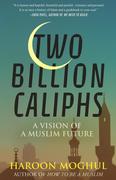72 Results for : caliphs
-

Two Billion Caliphs
Two Billion Caliphs - A Vision of a Muslim Future: ab 25.49 €- Shop: ebook.de
- Price: 25.49 EUR excl. shipping
-
Espana de Mi Corazon
It was a warm and balmy Mediterranean night as I walked down Las Ramblas, a famous walking promenade that stretches from the harbor of Barcelona into the city. It was my first night in Spain and I was thrilled in the early hours of the morning to see a group of Catalans promenading arm-in-arm singing their native Catalonian folk songs. Out of the night came the haunting sounds of Romanza de Amor, one of Spain's most famous melodies... and a song all guitarists learn. That night sealed my fate. Spain would remain a land of enchantment for me. The origins of Romanza de Amor are lost in time. Miguel Liobet, a famous guitarist of the early 1900's, was the first to write it down. It has since become popular world-wide with many nations writing their own words to the melody. Another love song, La Paloma (The Dove) also has an international history. Using the Cuban habanera rhythm made famous by Bizet in Carmen, the Spaniard Sebastian Yradier wrote what is often thought of by norte americanos as a Mexican song. A few years later, the Mexican Agustin Lara wrote a very 'Mexican' song about a town in Spain he had never seen. It eventually became the second most performed work in the world. When he later occasioned a visit to Granada, he said that everything he wrote about it was true. De Mi Corazón (From My Heart) was written by me in that same tradition of great Latin love ballads, inspired by a longing for my loved ones while on a protracted concert tour. Andalusia is the home of flamenco music (the music of the gypsies of Spain). It defies real understanding, according to the gypsies, unless you are one of them! The bravura, rhythms and raw passion of that music have gained a world-wide audience that may not understand the nuances of every little detail but they do respond to the immediacy of it's fetching songs and dances. On a train ride from Madrid to the south of Spain I met a couple of 'gypsies'. After drinking a little vino tinto with them and summoning up enough courage to play the Malagueña I had learned in my studies, I was politely told I had a lot to learn and they proceeded to start me on my way to 'authentic' flamenco. A number of works included here pay homage to those rascals the gypsies of Spain. Malagueñas come from the area of Malaga. The most famous was written by the Cuban Ernesto Lucuona. There is an ongoing debate whether he lifted his melodies from the gypsies or vice-versa. The Guajiras is a Cuban folk song that the gypsies took and made their own. It uses the hemiola effect of alternating 3/4 and 6/8 rhythm that is prevalent in much Latin music. The Gypsy Serenade that I wrote also uses the hemiola effect. It was written while I was in Zanzibar, which isn't as far fetched as it may seem since it, like Spain, was under Arabic rule for much of it's history. Zambra Gitana, another very 'Arabic' sounding work, comes from the caves of La Sacramonte. In them the gypsies danced with their bare feet on the hard dirt floors. Bullfight Flamenco pays homage to the Spanish national pastime, the bullfight. With it's pomp and impending doom (especially for the bull) it is the modern equivalent of ancient Greek tragedy, it's outcome seemingly preordained except for ... fate. The Aragon, located between Barcelona and Madrid, is famous for it's music and politicians (many of it's princes and princesses have become kings and queens). In the mid 1800's the guitar virtuoso Julian Arcas immortalized many of Aragon's melodies in the Jota Aragonesa. Clavelitos is a truly happy piece of music expressing the joy of being alive, of drinking sweet water, of feeling the life-giving warmth of the sun and of smelling the--ah, yes---the clavelitos (little pink carnations)! The Alhambra, the last palace of the Caliphs of Granada, is the most beautiful Arabic structure in Europe (in my opinion one of the most beautiful in the world). Washington Irving wrote his Tales of the Alhambra while actually staying there. And, every guitarist cherishes Recuerdos de la Alhambra (Remembrances of theAlhambra) written by Francisco Tárrega, the father of the modern classical guitar. I was trained by the American guitarist Guy Horn who was taught by his father, who was in turn taught by a protege of Tárrega's. I am always touched when I play this mesmerizing work inspired by the Alhambra's waters (fountains and pools), the imitation of which melds together a nostalgic picture of a Spain long since forgotten. The Aranjuez de Amor was written during the Spanish Civil War by the blind composer Joaquin Rodrigo. The Aranjuez was the summer playground of kings and queens during the twilight years of the Spanish empire in the 17th and 18th centuries. Rodrigo, repulsed by the carnage of modern war, hearkened back to an era that, at least on the surface, seemed more civilized. Leyenda, more than any other work, drew me to the classical guitar. My parents had a recording by the great Spanish guitarist Andrés Segovia. The album is older than I and I can say with Segovian understatement, 'I haf beean lisnink to theese music longk before I hwas bourn'. It is about the Austurias, a wild and foreboding place where the harsh Atlantic meets the Iberian peninsula. It has all the fire and passion we think of as being Spanish. Even it's title Leyenda (The Legend) is filled with mystery.- Shop: odax
- Price: 27.02 EUR excl. shipping
